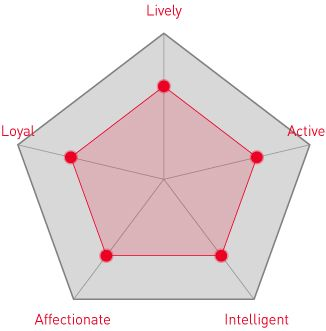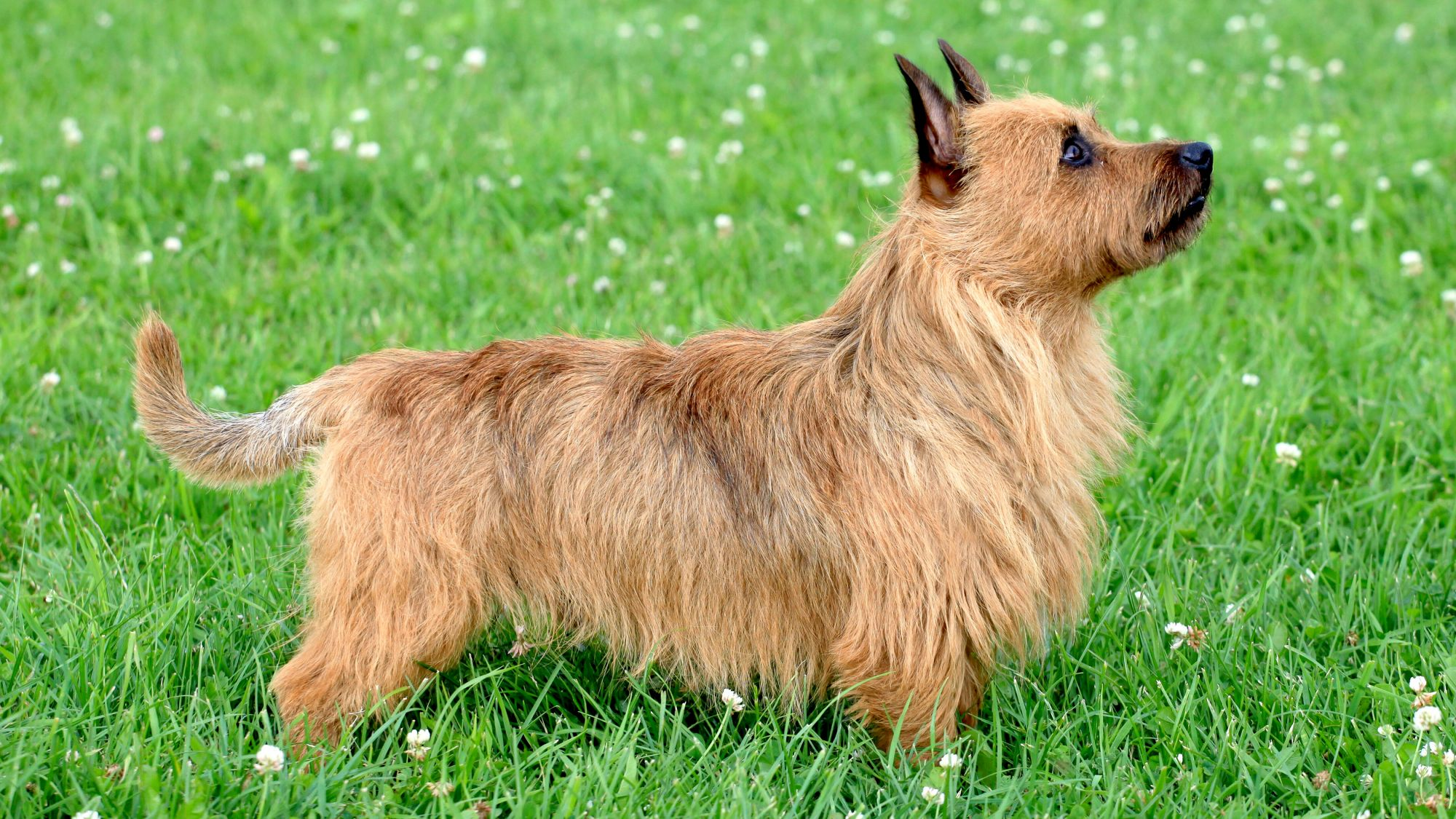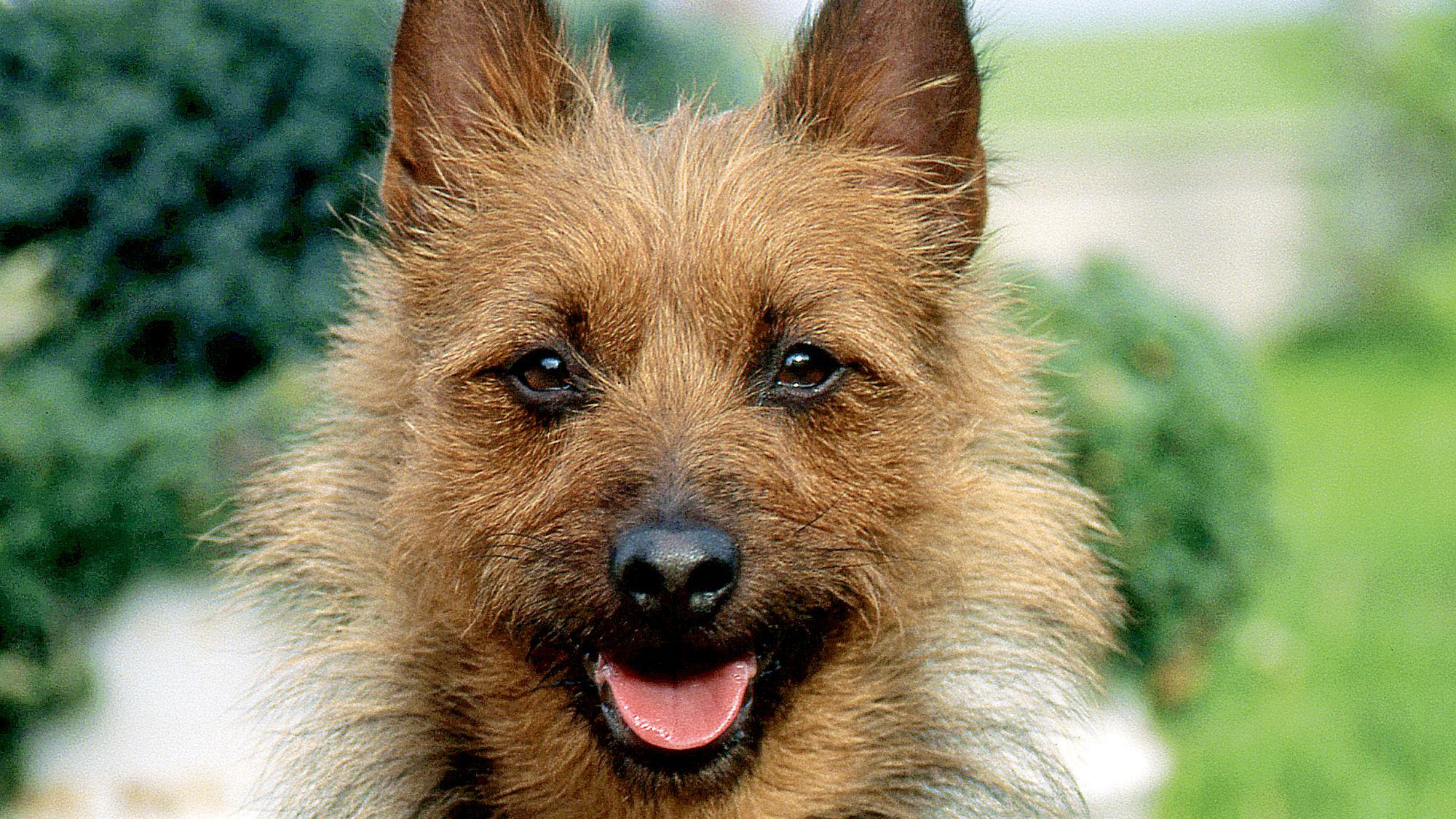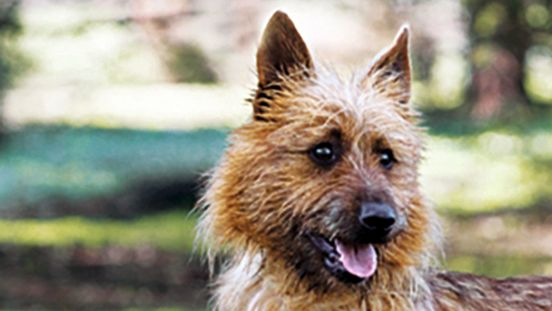
Let's talk Australian Terriers
Small in stature but full of energy, Australian Terriers make for a loyal companion. Originally bred in, yep, Australia to hunt rodents and snakes, this hard-working breed is now appreciated for its lively spirit and affectionate presence. With enough bravery to last a lifetime, the Australian Terrier makes for an excellent watchdog—but also enjoys clowning around with young children, once trained. Australian Terriers handle apartment life well, with few grooming needs and a low-shedding coat.Official name: Australian Terrier
Other names: Aussie
Origins: Australia

| Drooling tendencies |
|
Warm weather? |  |
| Shedding level |  |
Suited to apartment living? | |
| Energy Level (high, low, medium) *: | Medium | Family Pet?* |
|
| Compatibility with other pets | Can stay alone?* | 
|
* We advise against leaving pets alone for long stretches. Companionship can prevent emotional distress and destructive behaviour. Speak to your veterinarian for recommendations.
Every pet is different, even within a breed; this snapshot of this breed’s specifics should be taken as an indication.
For a happy, healthy and well-behaved pet, we recommend educating and socialising your pet as well as covering their basic welfare, social and behavioural needs.
Pets should never be left unsupervised with a child.
All domestic pets are sociable and prefer company. However, they can be taught to cope with solitude from an early age. Seek the advice of your veterinarian or trainer to help you do this.


| Baby age: | Birth to 2 months |
| Puppy age: | 2 to 10 months |
| Adult age: | 10 months to 8 years |
| Mature age: | 8 to 12 years |
| Senior age: | from 12 years |

1/7
Get to know the Australian Terrier
All you need to know about the breed
With the Australian Terrier, you get a lot of dog in one small package. They are the smallest of the Terrier breeds but you wouldn’t know it from their playful and energetic disposition. Your Australian Terrier doesn’t need to run a marathon, but several daily walks around the neighbourhood – on a leash – will keep them fit and their energy in check. This breed tends to stay lively well into old age, so is best suited to active households.
There are many benefits to living with an Australian Terrier – they’re great watchdogs, they’re loyal, and they’re low-shedding – but they have a few habits you should be aware of. First up, they’re vocal, which can be hard on the ears. Train your Australian Terrier early to help them keep their barking under control.
Their legacy as a working breed means that Australian Terriers possess a high prey drive, so small, furry animals are simply too much temptation. This is why you will need to keep your Australian Terrier on a leash during walks—they’ll be off at the first scent of any potential prey. Another important point: If you have a garden, a fence is a must, as your Australian Terrier will wander off thanks to their curious nature.
Australian Terriers are an all-round great family dog: Friendly towards children and grandparents, they form close attachments to their humans, adapting to match the household mood. They will follow you around, be by your side to greet guests, and play with children, before cuddling up next to you for a nap. Sounds good, right?

2/7
2 facts about Australian Terriers
1. Dig up dirt
If you’d prefer your vegetable patch to stay intact, then your garden has met its archenemy in the Australian Terrier. The clue is in the name! Like all terriers, the breed enjoys nothing more than digging holes. It’s unwise to leave your Australian Terrier alone in the garden—your lawn will never be the same again.
2. Leader of the pack
There’s no way to say this delicately: Australian Terriers try to be the boss of the household. Not just with other dogs but with their humans too. They’re natural born leaders, with a history that has shaped them to be independent and develop a slight competitive streak. But there’s no need to make a mountain out of a dog-hill: Early socialisation and consistent training will show your Australian Terrier that the boss of the house is you.
History of the breed
When 19th century Brits settled in Australia, they brought along Terrier dogs with them. It is therefore believed that the Australian Terrier descends from several terrier breeds, including Scottish, Yorkshire and Norwich Terriers. The Australian Terrier was bred to be brave, with the mission of catching undesirable furry animals and snakes in the most remote parts of Australia. Apparently their signature move was known as the “twist and pounce”.
Their courage in the face of harsh weather conditions also saw the Australian Terrier helping shepherds, principally as watchdogs and sheepherders. This was their first experience of working alongside humans and forming close attachments, a.k.a. learning to cosy up after a hard day of work. Their loyal companionship remains a much-admired characteristic of the Australian Terrier we know today.
Commonly referred to as “Aussie” dogs in their origin country, they were the first Australian breed to be recognised both at home and abroad. First brought over to England in the early 1900s by British aristocrats, the Australian Terrier has since charmed its way into the hearts of many families around the world.

4/7
From head to tail
Physical characteristics of Australian Terriers
1. Ears
Small pointed ears are set high on the head.
2. Head
Long head sitting on a strong, slightly arched neck.
3. Body
A small body but long and sturdy, with a self-assured gait.
4. Tail
Tail is short and set high, always standing to attention.
5. Coat
Short-haired double coat, straight and coarse in texture.

5/7
Things to look out for
From specific breed traits to a general health overview, here are some interesting facts about your Australian Terrier

6/7
Caring for your Australian Terrier
Grooming, training and exercise tips
Good news for owners, the Australian Terrier has a short double coat so grooming is minimal. More good news, their coat is also weatherproof, which means it repels the great outdoors, as opposed to attracting it. To stay looking sharp, your Australian Terrier just needs one weekly brush, a monthly toenail trim and a bath every three months.This sturdy dog breed does need daily exercise to keep the boredom at bay and their muscles in peak condition. A play session or two in the garden and two walks per day is optimal exercise for your Australian Terrier. Always keep them on a leash when out and about as their prey instinct could lead them to chase after smaller animals—or cars!
Training the Australian Terrier as early as possible is essential as they are definitely on the headstrong side (small dog complex). Very smart, they are, however, easily bored, so keep training sessions short and varied. Toys and positive reinforcement will always work a charm with your Australian Terrier, who aims to please you.
7/7
All about Australian Terriers
While they are the quietest of the Terrier breeds, the Australian Terrier is still rather barky. Their hard-working heritage and watchdog tendencies means the Australian Terrier is often on high alert. They will use their bark to warn you that someone is approaching the house, or that something is potentially amiss. To avoid driving your neighbours up the wall, early training is key. Luckily, Australian Terriers are a smart breed so they will learn quickly once you set those barking boundaries.
Despite their high energy levels, Australian Terriers are well suited to apartment living. They are small in stature so they don’t take up much space and their low-shedding coat means that they won’t leave their fur everywhere. As much as Australian Terriers suit an apartment lifestyle, they much prefer it when you are there with them. They are a breed that takes to travelling rather well so do include them on road trips or weekends away, to avoid leaving them alone for extended periods of time.
translations.feature.breeds.otherbreeds
Read more on this topic

How your dog's nutrition needs change with age

How to adopt a dog

Things to consider before getting a dog
Sources
1 - Veterinary Centers of America https://vcahospitals.com/
2 - Royal Canin Dog Encyclopaedia. Ed 2010 and 2020
3 - Banfield Pet Hospital https://www.banfield.com/
4 - Royal Canin BHN Product Book
5 - American Kennel Club https://www.akc.org/


